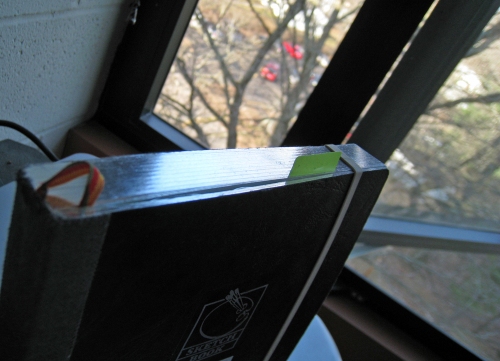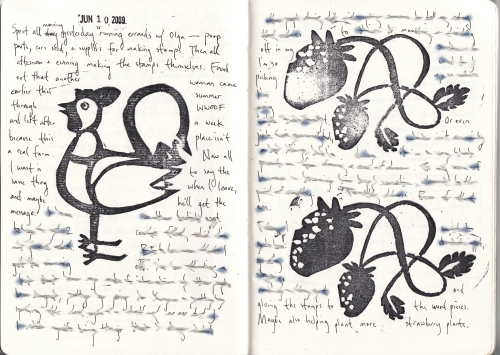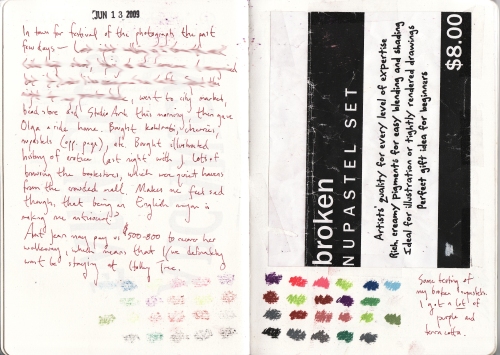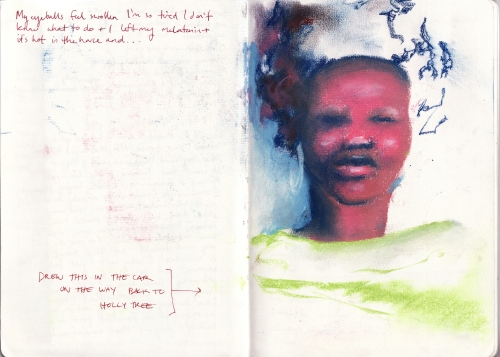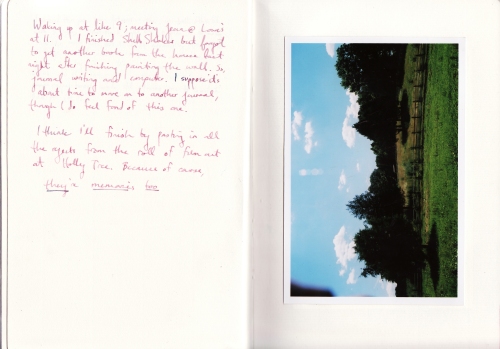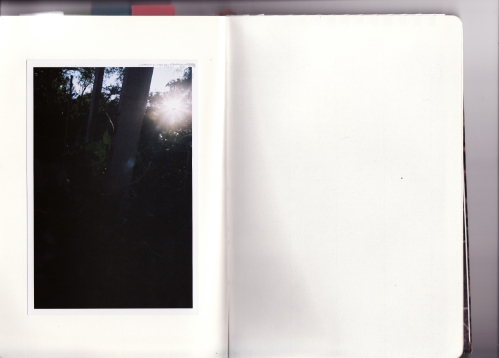In this post, I outlined my initial impressions of four different Clairefontaine papers, which I received generously from Exaclair and bound into a short-term, multi-purpose book (what some people call a “journal”). I used this book during the last weeks of classes, as well as through the madness of Senior Week, and Graduation itself.
And it felt good (really good) to put this book aside after graduation– to start brand new, on a blank page. (What a handy metaphor, no?)
As it turns out, my blank page was on the other side of the country. But now I’m here in Colorado, and yes, I promised fuller reviews. So here we go.
Digital Color Printing Paper

Pentel Pocket Pen and ink on DCP Paper
First, to clarify: this paper isn’t meant for traditional writing and media. It’s for machines, and I’m sure it works superbly that way. But I’m not interested in machines (except, maybe, Leo Marx’s). I wanted to test a loose-leaf Clairefontaine paper– one that could be used for bookbinding!
This has perhaps been one of the few drawbacks to Clairefontaine products– they’re more like, well, office supplies than art supplies. So I really appreciate trying out some loose-leaf paper, which can be used as a raw material for a variety of art projects. The DCP paper is also available in a variety of weights (90 to 350 gsm), which allows for even more customization.
The short version: Use your fountain pens, markers, brush pens, and crayons on this paper; leave the paint and wet media alone. Water-soluble pencils/crayons/pastels have the potential to work well (perhaps if they’re more oil-based) but don’t overdo the water. Stephanie at Biffybeans did a review of this paper, and had similar findings.
Also, this is the time to experiment with bright colors. So channel your inner pop artist.
However, for whatever reason, I found that I did less art on this kind of paper. When I did draw, I used my Pentel Pocket Pen, which left beautiful, clean, high-contrast lines. Writing (in ink) on this paper was pleasurable, but the paper was too glossy to use a pencil, and the thinness also encouraged more minimalist approach.

Stamped! Notice the wet spot to the left; that's bleed-through from the drawing posted above
Continue reading ‘An Assorted (Yet Cohesive!) Paper Review’


























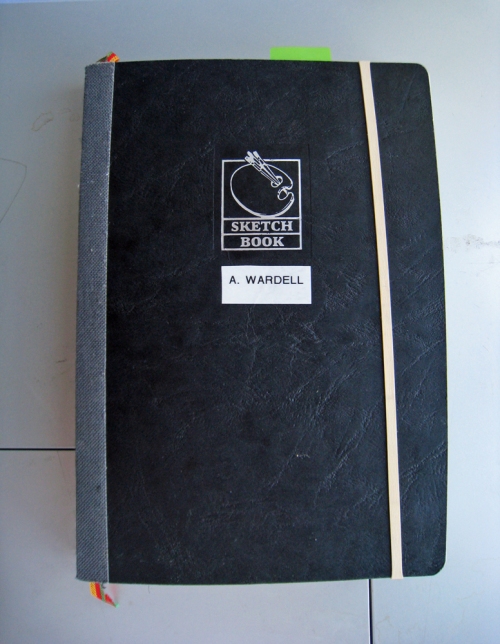 Enter the Exacompta sketchbook. By now I’ve spent a few weeks with this delicious book and I can say that it’s hands down my favorite store-bought basic black book (BBB).
Enter the Exacompta sketchbook. By now I’ve spent a few weeks with this delicious book and I can say that it’s hands down my favorite store-bought basic black book (BBB).